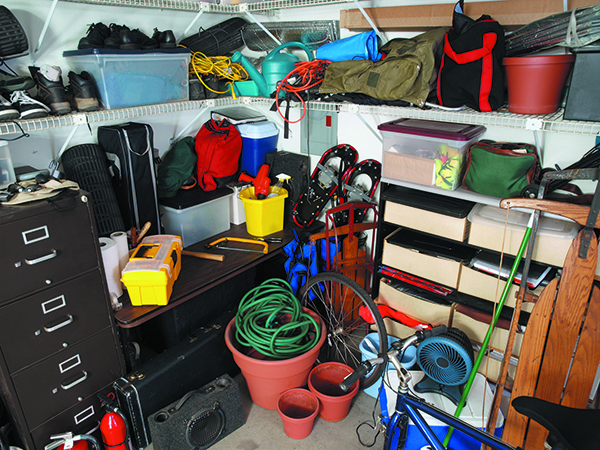Can you be creating as much air pollution inside your home as your car does outside? Depending on the products you use, cleaning your bathroom, kitchen or any room in your home could be adding volatile organic compounds, or VOCs, to the air you and your family breathe. Yes, that is the same class of harmful chemicals found in such known hazards as turpentine and gasoline.
The combination of emissions from household cleaners, paints, pesticides and personal-care products is now rivaling motor-vehicle emissions as the top source of city air pollution, according to a study conducted by researchers at the National Oceanic and Atmospheric Administration (NOAA) and other institutions across the US. Worse still, in your home, you can be exposed to VOCs from these sources at concentrations seven times higher than outside, says atmospheric chemist and study coauthor Jessica Gilman, PhD.
And here’s why you should be concerned: It doesn’t take much exposure to some VOCs for health problems to start. You might experience headaches, drowsiness, nausea, eye irritation and other allergic reactions, and respiratory difficulties. And the more you’re exposed to VOCs, the greater the health risks—they can harm your lungs, heart, liver, kidneys and central nervous system and could lead to lung cancer.
We’re not suggesting that you stop cleaning your home or forgo repainting the family room, but there are steps you can take to reduce your household emissions footprint and therefore protect your health, according to Dr. Gilman at NOAA and Peggy Jenkins of the California Air Resources Board…
Become more aware of the range and volume of chemicals you use. Count all the products under your kitchen sink, in your laundry room and in your garage—you may be surprised at how many you’ve amassed. Now add items from your home office to the list—from glue sticks to printer ink. If a product smells—good or bad—it’s emitting VOCs. Common household VOC sources include…
- Air fresheners, deodorizers and scented candles
- Bathroom and kitchen cleaners
- Dishwasher and laundry detergents
- Dryer sheets
- Furniture and floor polish
- Glass cleaners
- Glue
- Moth balls
- Paints, stains and related products
- Printer ink
- Pesticides
- Rug and upholstery cleaners
Pare down your chemical inventory…and the way you use them. It’s not hard to think of ways you can minimize the number of different products you use—do you really need four or five different cleaners for the surfaces in your bathroom? And by minimizing the number, you can focus on finding a few products that work well and contain a minimum of VOCs.
You can also probably use less of each product for most jobs than you are used to. We all get into the habit of squeezing spray handles all the way…pumping pump nozzles to the very bottom…covering every inch of a surface with cleaner. The truth is, a lot less can often clean just as well and exposes you to a lower chemical load in the air. (Using less saves money, too.)
Make your own cleaning products. If you clean your home with store-bought supplies, you can easily be emitting VOCs into the air. The only common cleaning solution that doesn’t contain VOCs is straight-up water or water mixed with baking soda, says Gilman. The baking soda will create carbon dioxide, a greenhouse gas, when it bubbles, but no VOCs. Just switching to a simpler product, like vinegar, can help. Even though vinegar emits some VOCs, it’s a better choice than more noxious and harmful cleansers. Want more ideas? Check out these “8 Best Homemade Cleaners.”
Buy VOC-free products when you can. Keep in mind that so-called low-VOC products are permitted to have up to 50 grams per liter, and “VOC-free” products can have up to 5 grams per liter. So favor “VOC-free” when you can. Check the packaging or look at the manufacturer’s website for information on the exact content. The EPA list of hazardous air pollutants is also a good guide when looking to avoid certain chemicals, says Gilman.
Ax the air fresheners. Nearly half of Americans use air fresheners at least once a week, according to Consumer Reports. This means that many of us are literally spraying VOCs into the air to “freshen” it—and actually just adding to indoor air pollution. Surprisingly, the worst culprits are citrus- and pine-scented products, notes Gilman. They contain a class of compounds called monoterpenes that are especially reactive in the atmosphere and contribute to the formation of particulates in the air.
Bring fresh air in, send pollutants out. Vow to open your windows and exterior doors more and flip on bathroom or kitchen fans that exhaust outdoors when you’re cleaning or cooking. Other options are operating window or attic fans and running a window air conditioner with the vent control open. Ventilation not only helps to reduce levels of air pollutants but also to control humidity, says Jenkins, important because many chemicals off-gas at greater rates in higher humidity.
Think small quantities. When it comes to VOC-containing products, buying in bulk is not your best bet even if it saves you money. Instead, buy only what you will use quickly. If you do have leftover product, such as paint or wood stripper, seal the container tightly and consider storing it in a detached shed or at least in the garage, says Jenkins. Products can release organic compounds, to some degree, even when they’re stored.
Check out these articles for more ways to protect yourself and your home…
“5 Steps to Reduce Your VOC Emissions Footprint: Personal-Care Edition”
“How an Air-Quality Expert Protects His Own Home”
“Hidden Dangers of Indoor Air Pollution”

